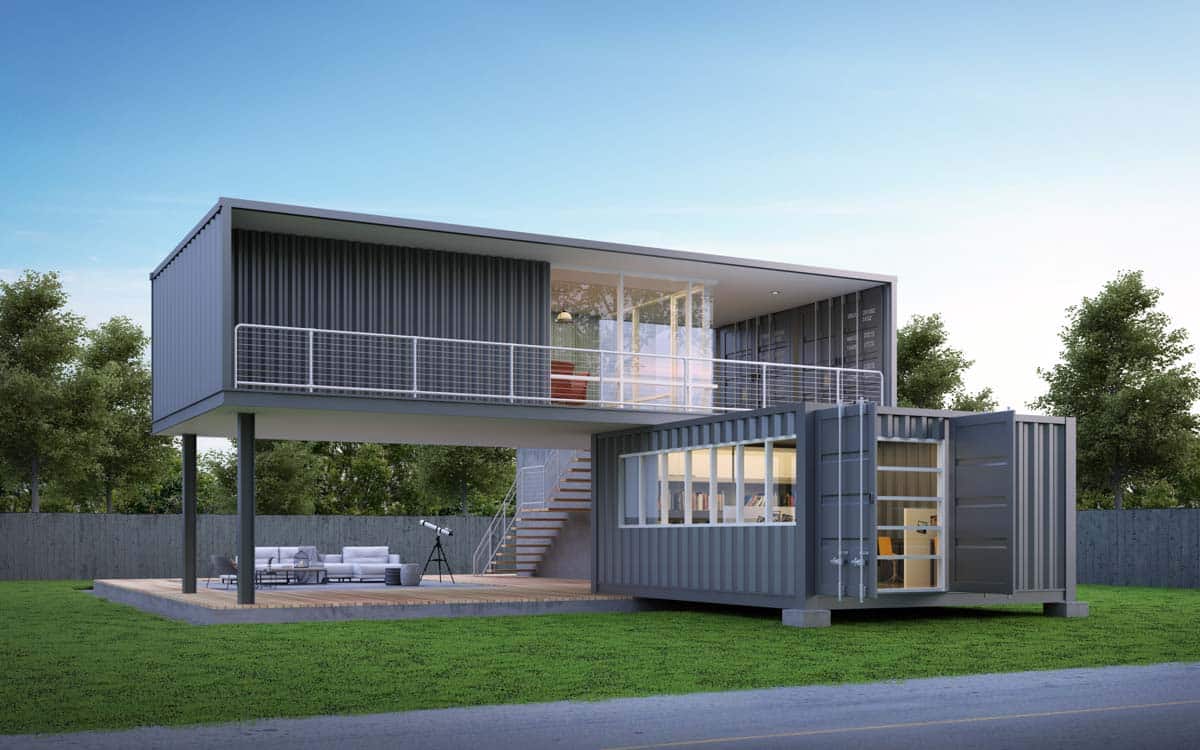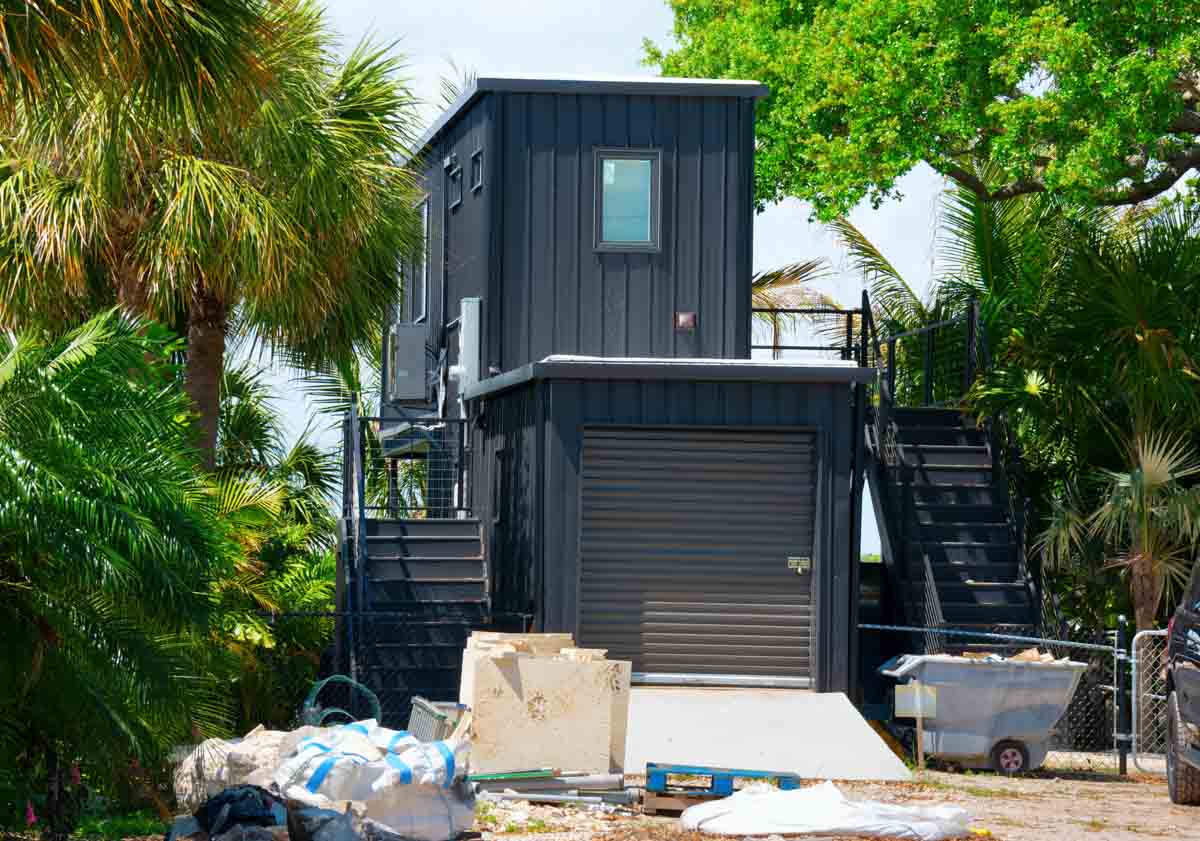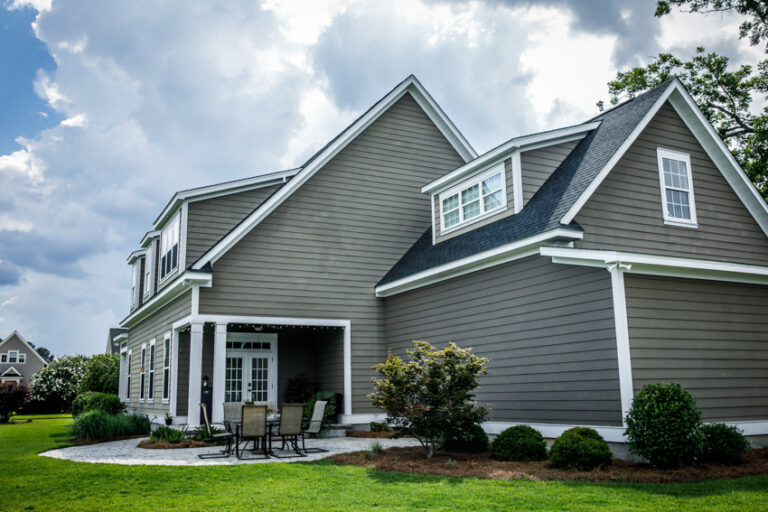Pros and Cons of a Container Home: Are They Worth It?
Discover the pros and cons of a container home , featuring the advantages, disadvantages, sizes, how long it lasts, and the different prices.

A container home, also known as a shipping box house or dwelling, is a residential structure built using repurposed shipping containers. These containers are typically made of steel and are used for transporting goods across long distances via ships, trains, and trucks. Container homes have gained popularity as a sustainable and cost-effective housing solution that repurposes existing resources. Standard sizes of container homes measure 20 feet and 40 feet, providing 160 and 320 square feet of living space.
The concept of container homes originated from the desire to find innovative ways to address housing shortages, promote eco-friendly building practices, and create unique and modern living spaces. Instead of letting used shipping boxes go to waste, they are transformed into functional, comfortable living spaces.
Container homes provide ample space that is attractive to tiny living and sustainable living, which are trending now in younger generations. They come in various sizes and configurations, as they can be built using individual cargo boxes or by combining multiple ones to create larger dwellings. The containers are modified to include essential amenities like insulation, windows, doors, plumbing, electricity, and interior finishes.
Shipping Container Home Advantages
Strong and durable build: Shipping containers are built to last which can withstand weathering conditions. The primary material used in in construction is Corten steel or Cor-ten steel, also termed weathering steel. The alloy is long-lasting and stronger than carbon steel. Portable containers are usually discarded after 10 to 15 years and are made into container homes.
Many shipping container house companies state that these homes can last 50 years or more. However, Corten steel had just been introduced in the 1930s. There still needs to be reliable data to back up the longevity of the steel alloy.
Fast construction: Because these homes come with a ready-made enclosed space, the modular units can be assembled with less time and labor. They arrive preassembled, also cutting time in transportation. The assembly of scaffolding alone takes an amount of time to plan and assemble.
For instance, formwork and curing time for concrete also take significant construction time. With a container, automatically, you get a wall standing that’s tough enough to withstand strong winds and protect the interior from other weather conditions.
It can be built in isolated areas: The ease of transportation of these products makes it possible to build even in isolated areas where transporting building materials is difficult. As long as the boxes are not welded together and can be taken apart, it’s possible to disassemble and move it to another location.
Common methods to transport shipping container homes are tilt bed trucks, flatbed trucks, step-duck, drop deck trucks, or trucks with a mounted crane.
Affordable than conventional homes: Material costs rise annually along with labor costs. For this reason, prefabricated homes have become a popular alternative to the more costly traditional building since less materials are used.
Adaptable design: The modular nature of container homes makes it easy to combine a number of cargo boxes together to meet the owner’s preferences. These structures can be stacked on top of each other to create a stylish container house, a multi-story building, or assembled side by side to increase the area.
Shipping container homes usually come 10 feet, 20 feet, and 40 feet long boxes with a fixed width of 8.5 feet and 8 feet high.
Helps the Environment: Building construction alone produces a significant amount of pollution and material wastage. A ready-made enclosure can lessen construction activity which can produce dust and other pollutants.
There are also fewer building materials to be transported and other usual logistics. The construction process is sped up and has reduced the impact on near-natural environments.
There are millions of unused cargo containers due to empty boxes repositioning on a global scale. Repurposing them can reduce the number of unused cargo boxes and the need for more energy spent on recycling metal.
Aesthetic appeal: A well-designed container home can be an eye-catching home, and many design firms have already built notable architectural designs worldwide. Some units have been stacked together to create entire apartments and large sprawling residences.
Housing units for students, hotels, and even clothing brands have used the repurposed cargo containers, which became tourist attractions. These stylish tiny homes provide a basic structure that can adapt to an industrial or minimalistic building style.
Container House Disadvantages
Require an expert builder: Shipping container homes are relatively new, meaning experienced cargo shipping contractors are limited in certain areas. While most of these homes provide installation and modifications, not all companies offer the same after-sales and warranty provisions. Repurposing a box may not be an ideal DIY project who have limited experience in construction.
It may contain harmful chemicals: Storage unitsthat have been used to ship goods may contain or leaked off harmful chemicals and will need a thorough cleaning. Moreover, these units are usually treated with pesticides to keep away pests.
Before construction, make sure the shipping container has been sterilized and cleaned. Seek reputable home builders that have made sure that their containers have been thoroughly cleaned before being made into a habitable space.
Sealing off the surface with low or non-VOC wet applications reduces the risk of fumes from releasing into the air. It is best to have the structure tested for toxins. A professional testing service is needed to evaluate the toxins present and how to address the chemicals.
Can gain heat: Since container homes are made from metal, heat gain and loss can occur when improperly insulated. A study on ventilation should also be considered when building.
For places that have dry climates, a a container unit may not be practical. Additional ventilation measures, such as installing certain types of windows, will be needed, which will defeat the purpose of having an eco-friendly home.
Unless proper planning is provided with integration of cross-ventilation systems and architectural solutions are provided. This will entail a study of the site and utilizing these external factors to improve the indoor temperature.
All homes require ventilation to remove excess moisture, filter pollutants (e.g., dust, dirt, and chemicals), and replace stale air with fresh air from outdoors. – Green Building: Principles and Practices in Residential Construction, Abe Kruger, Carl Seville
Concern on Moisture: Metal structures are prone to condensation, which can lead to moisture-related issues like mold and rust if not appropriately addressed. Address proper insulation and ventilation measures to prevent deterioration. One such example is considering spray foam insulation.
It cannot be built anywhere: While these portable storage units be easily transported to hard-to-reach places to build, zoning restrictions or the lack of them in certain areas may prevent building a home out of these products.
Cargo containers reused to build a home are quite new, and most localities still need to provide building regulations specific to this design. This reason may cause a pending approval for a proposal or, worse, a rejection from the building council.
Not all container homes are visually pleasing: Some structures look too utilitarian and can even be considered eye sore as most of these homes emphasize durability more than aesthetics.
However, consulting a designer to provide solutions to incorporate the structure into the site and the surrounding environment can result in stunning designs.
Most subdivisions or home development sites do not allow container homes, and building codes may not have specific guidelines for these structures. However, there are localities that are slowly adapting to alternative housing, and due to their popularity, they will eventually be integrated into building codes.
How Long Does a Container Home Last?
According to FSE, the average service life of a container home is 25 to 30 years and is highly dependent on the environment. Other home suppliers claim that container homes can last up to 50 years or more.
When a shipping container home is humid, the metal structure is more likely to develop rust. While corten steel develops a natural patina that protects the surface when exposed to elements, other parts, such as hinges and openings, are prone to developing rust faster.
Most units will have a protective layer of paint to protect the metal surface. But over time, the paint will eventually chip or peel off. Periodic repainting of the exterior surfaces will extend their longevity.
How Much Are Container Houses?
Shipping container homes vary widely due to many factors and a basic model can have a price from $10,000 to $35,000, without the land.
$150 to $350: Average cost per square foot
$25,000 to $80,000: Total cost to build a single box unit.
$80,000 to $250,000: Total cost to build a multi-container home.
From $100,000 to $ 175,000: These can also be luxury homes.
Shipping container homes can be purchased ready-made, complete with all the amenities, and shipped off to a location. These homes can be built from scratch, repurposing a used box by hiring a professional construction team or as a DIY project. According to Forbes Home, the average cost of moving a container (20 feet or more) is $5 per mile.
According to SFGate, a container can cost under $3,000, which is a great option if planning for a DIY project. A ready-to-move-in structure will start with a price tag of $30,000.
For domestic shipping, it can cost $2,000 to ship a small one-bedroom box house. At the same time, international shipping these homes can start at $1,400 to $6,900, depending on the sender and receiver locations.
The size and number of containers used to build the home will significantly affect the cost. Larger homes or those constructed using multiple boxes will generally be more expensive.
The condition of the structure also affects the pricing. New or one-trip containers are generally more expensive than used boxes. The cost may also vary based on any repairs or refurbishments required.
The design complexity of these homes and the required customization level will also impact the cost. Elaborate designs, intricate modifications, and unique features may increase expenses.
Other factors that can influence the price are foundation and site preparation, inquartation and climate control, plumbing and electrical work, permits and regulatory compliance, labor and professional fees, and crane services. The land cost will also affect the overall cost.
Are Containers Safe?
One of the top concerns regarding shipping containers is whether the materials of the structure are safe. While they are made from a durable material, they are often painted with added chemicals to protect their contents during transportation.
The paints or chemicals used on the cargo shell may release harmful fumes in the long run and pose health risks to people. Examples of chemicals often used to protect a cargo container from saltwater corrosion are chromate and phosphate-based paints, lead, and cadmium. The structure can also contain heavy metals such as lead and cadmium.
Shipping containers are constructed with various types of materials, which poses the possibility of chemicals seeping through the walls. It is important to decontaminate a repurposed unit before undergoing any structural transformation. That is why it is important to find a reputable supplier that provides a history of the repurposed cargo box.
With regards to withstanding harsh weather conditions, these homes are safe, given that quality construction and materials are used. Not only repurposed cargo ships are equal as some may have dents or compose of weaker components due to wear and tear. In addition, cutting holes in windows, doors, or utilities can weaken the shell.
Since these openings can weaken the walls, vertical loads, such as placing another cargo container on top of the other, will need additional structural support. Also, check for signs of fatigue before purchasing. Like traditional homes, an expert should check the structures integrity to ensure proper reinforcement is provided to make them safe for habitation.
Are Container Structures Good for Winter?
When properly designed, container homes can provide a comfortable and safe interior. A crucial factor in ensuring thermal comfort is proper insulation. Since they are made from high-conductivity metal, their temperature can be influenced by their surrounding environment. During winter, the exposed material will feel cold but unaffected by the temperature drop. The exterior metal does not get brittle or affect the structural durability.
During the early stages of planning, consider taking insulation measurements and installing material on the container home foundation. This will significantly improve the energy efficiency of your home. Consider raising the foundation and adding insulation beneath the structure, especially if you have adverse weather conditions.
This will prevent heat from escaping the floor and lessen moisture from seeping through the structure. In addition, the skirting and base of the floor will prevent cold drafts from entering the interior.
Seal openings to ensure indoor comfort during winter or any other weather condition. Insulate the walls, floors, and ceiling design types inside to prevent heat loss. Insulation methods that are easier to implement when converting a shipping box to a habitable structure are spray foams and installing rigid foam boards.
Implement a good heating strategy during construction, such as installing radiant floor heating. Ensure that the radiant floor heater’s heating capacity matches the home’s size.
Other Considerations:
Snow load: In general, the unmodified overhead material of a container home can withstand 330 lbs. per square foot, which is over 8x the average load capacity of traditional roof types. Wet snow will weigh around 13 lbs. per square foot and 6 lbs. per square foot.
But most repurposed boxes will opt for a modified roof to prevent rain and snow from accumulating on the flat surface. Coated steel sheet or galvanized metal roofs are a great option for durability and aesthetic purposes. Shingles can also be used when opting for a traditional look. Shingles are also great for insulation.
Windows and doors: Use double-glazed windows or any window with good insulation properties to prevent heat loss and cold drafts. For doors, consider having a secondary opening, such as double doors or roll-up doors made from metal.
The secondary doors can be left open when a container home is occupied and can be locked shut when leaving the property. Most standard-sized units will have heavy-duty doors which are watertight and weather resistant.
Are Container Tiny Houses Worth it?
For people who are looking for an alternative building design that has the potential to be an environmentally-friendly housing solution, a shipping container is a worthy investment. But it is important to do research before acquiring one or repurposing a shipping box.
Since shipping container home building is still relatively new and few are built in most localities providing limited case studies. Although, the rise of its popularity is a good sign as an alternative to traditional homes, its a good idea to get positive feedback from both builders and homeowners to ensure its right for you.
There are factors to consider before committing. The most important consideration is the location where the shipping container is to be built. Not all locations are practical, and working with one’s available budget and time frame will help evaluate early on if it’s a practical solution.
When it comes to its resale value, container homes may be lower compared to conventional homes. But for housing development, shipping containers offer fast construction and setup and may work well as a secondary onsite rental or office unit.













